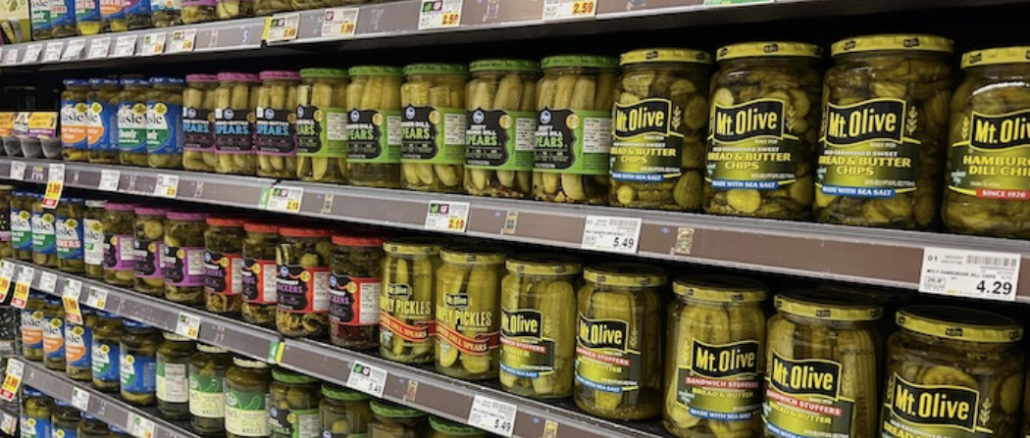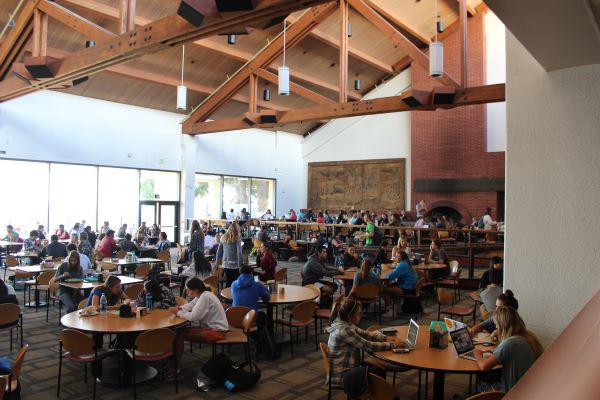
Known for its beautiful beaches and sunny skies, Malibu, California, is home to the rich, the famous, and the stereotypical “broke-college student.”
Some out-of-state college students at Pepperdine University struggle with increased spending on average goods and services due to Malibu’s higher cost of living.
“It’s just more expensive than what I’m used to,” said Jamisen Casey, a first-year political science and international studies major from Nashville, Tennessee.
Four students who moved to California to attend Pepperdine explained how Maibu’s higher cost of living has impacted their daily lives and financial decisions.
Malibu attracts money
Malibu’s location attracts wealth, Finance Professor Haley O’Steen said.
“Because of the coastal location, the land is more valuable, so more people will want to come out here,” O’Steen said.
In 2021, California included roughly 70% of the nation’s most expensive zip codes and locations for home buying, Jack Flemming wrote in a Nov. 18 Los Angeles Times article.
LA County’s Beverly Hills and Santa Monica hold spots in the top 10, with median prices around $4 million, Fleming wrote. Malibu is tied for the 21st spot with the Pacific Palisades’ 90272, “where the median price was $3.25 million.”
“During the pandemic, people got comfortable spending money in domestic vacation cities like Malibu,” Drew Meyers of Westside Estate Agency told The Los Angeles Times. “A lot of European countries are still shut down, so instead of spending money there, people are buying houses in places where they can vacation but still have a sense of normalcy.”
That affluence attracts luxury shops and restaurants.
“It makes everything across the board more expensive,” O’Steen said.
Students from middle America, like Casey or Alayna Weyandt, a junior biology major from Plano, Texas, face significantly higher costs.
The cost of living in the Los Angeles-Long Beach area is 56% greater than where Casey lives in Nashville, according to Nerdwallet, an online finance company that calculates and provides financial resources for web users. Costs are 35% greater in LA than Plano, Texas.
Grocery shopping at Ralphs in Malibu Colony Plaza was the first time Weyandt knew she’d be paying more money in Malibu.
“I went to Ralphs in Malibu, and I saw that the pickles were $4.50 or something like that for the kind I wanted, and that’s when I realized it was more expensive,” Weyandt said.
Back home, she would pay $2 for the same brand.
Adjusting to the higher prices
For most college students, it’s common to see a learning curve when making financial adjustments to fit California’s higher cost of living, O’Steen said.
Wyatt Axmann, a first-year political science and religion double major from Louisburg, Kansas, said he has adjusted to spending more off-campus, but it’s not by choice.
“My leniency to paying a little bit more has grown, but just because I have to if I want to buy anything,” Axmann said. “Like I’ll look at something and say ‘Oh, this is expensive,’ but I still need it, so I just have to pay more money for it because it’s a necessity.”
While she expected things to be a little more costly than Nashville, the prices are much greater than her expectations, Casey said. She finds prices to be about 25% higher on average.
“A smoothie in Malibu is like $7-$8,” Casey said. “But if I go to like Smoothie King in Nashville, it’s only $3-$4.”
Students debate going off-campus
For Pepperdine students who are not fond of cafeteria food, deciding whether they want to spend money to dine off-campus is a frequent question.
Axmann said he tries not to go out as much because restaurants are more expensive. He averages about two to three meals a week off-campus.
Eating at restaurants in Malibu has also changed Weyandt’s definition of what she’d consider an expensive meal.
“The other day, I was out to dinner with friends, and I got the check and I saw that I spent $100 on dinner and dessert and stuff,” Weyandt said. “And I’m like, ‘Oh, that’s not too bad.’ Then I remembered that I used to think spending $50 on myself for dinner was crazy.”
Lia Hayek, a first-year screen arts major, said when she first moved here from Hong Kong, she was surprised by how much money one could spend on off-campus meals.
“Personally, I’m spending a lot of money on food,” Hayek said. “I realized that here you either pay a lot for good quality or you don’t, and the quality is not good.”
For Hayek, learning how much taxes and tips contribute to total spending at restaurants was also a new experience.
“Back home, you pay 10% for the service charge, and then here, like in Malibu or Santa Monica, it’s normal to pay a 20% tip, which is something I never grew up with,” Hayek said. “And if you’re eating out every day or multiple times a week, it does add up and becomes something you can’t do a lot.”
Restaurants in Los Angeles are more expensive than Hong Kong by 36%, according to Numbeo, a global database that contains various statistics, including on consumer spending.
The average cost for a meal from an inexpensive restaurant in Los Angeles is $20, whereas in Hong Kong, a meal from an inexpensive restaurant is roughly $8.
A meal from an inexpensive restaurant in Los Angeles is about 28% more expensive than in Nashville, according to Numbeo.
Transportation costs spike in Malibu
Another inconvenience about Malibu is transportation, Hayek said.
Being from overseas, Hayek was not expecting Malibu to be car-dependent.
For those on campus who don’t have access to a car, a common alternative is rideshare apps like Uber or Lyft, Hayek said.
“We need a car here,” Hayek said. “Gas is really expensive too, which is something I never took into consideration because back home I would just use public transport, which is not accessible here.”
Compared to Hong Kong’s taxi system, the transportation rates in Southern California are incredibly high.
The average price of a 10-mile taxi ride (16 km) in Hong Kong is $4, while the average cost for a 10-mile Uber ride in Los Angeles is approximately $19.
Having a car also comes with unfavorable expenses, Casey said.

Increased gas prices in Calabasas, California. While increased prices are due to circumstances in Ukraine, Los Angeles has become one of the first major cities in the U.S. to average $6 a gallon, according to the Los Angeles Times (Photo by Jordan Solofa).
In Nashville, she’d pay around $70 a month on gas, but is now paying $70 multiple times a month to fill her tank in Malibu, Casey said.
The average per gallon of regular gas in Los Angeles County was $4.74, according to AAA Gas Prices. Regular gas prices in Nashville, Tennessee and Plano, Texas, average around $3.82.
Adjusting to the costs
Some students also have to make lifestyle changes to adjust to the higher cost of living. This includes sacrificing social events, getting jobs and deciding how they should spend their time off-campus.
Axmann said he pays more attention to how often he goes out with friends, and what sacrifices he needs to make to stay within his budget.
Additionally, Casey said she started working for Campus Recreation to help adjust to the higher costs.
“I wasn’t planning on getting a job freshman year, but I’m having to spend more money here than I was back home,” Casey said. “I’ve had the same budget since high school, but I’ve had to make changes to it since school started.”
For out-of-state students, living in Malibu could present more stress because students are facing very expensive prices for the first time on their own, O’Steen said.
“The problem is we have a lot of students coming from a lot of different places and so [the higher cost of living in Malibu] can be a big shock,” O’Steen said.
She has also noticed a lot of students have jobs (sometimes even multiple ones) to keep up with the cost of living.
For many students, like Weyandt, comparing their costs to what friends pay back home causes the most frustration.
“It hasn’t like, impacted me super negatively, there are just some things I see myself sacrificing in comparison to my friends,” Weyandt said.
Jordan Solofa completed the reporting for this story in Jour 241 under the supervision of Dr. Christina Littlefield and Dr. Theresa de los Santos. Dr. Littlefield supervised the web version of the story.



